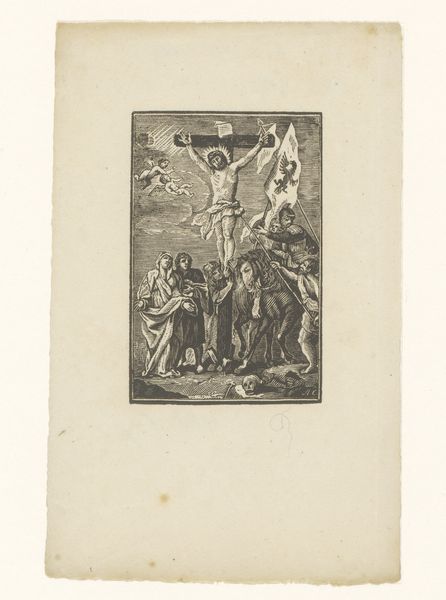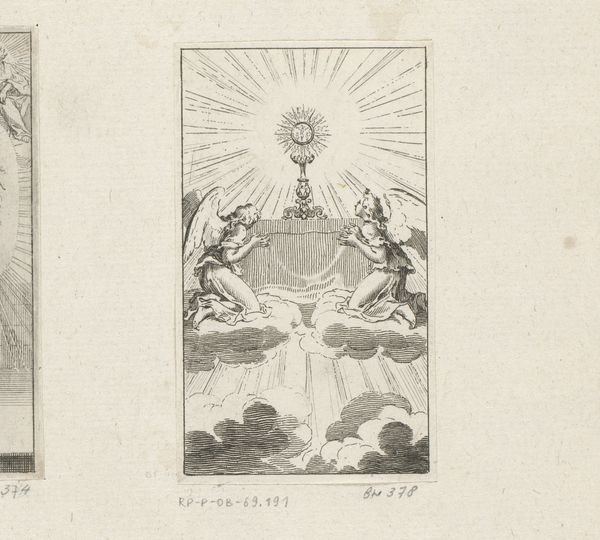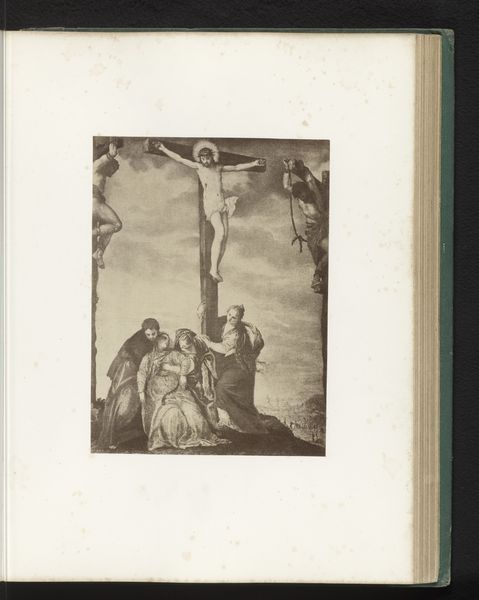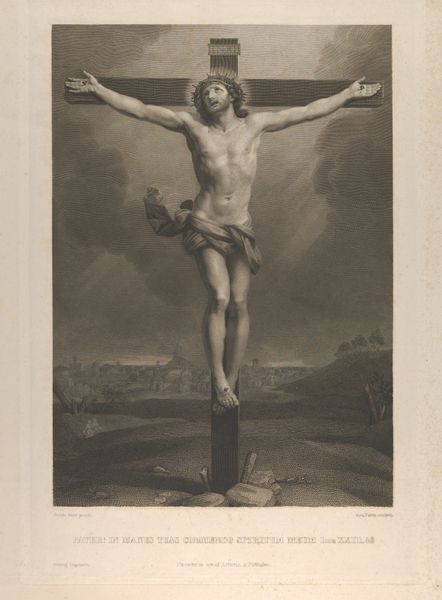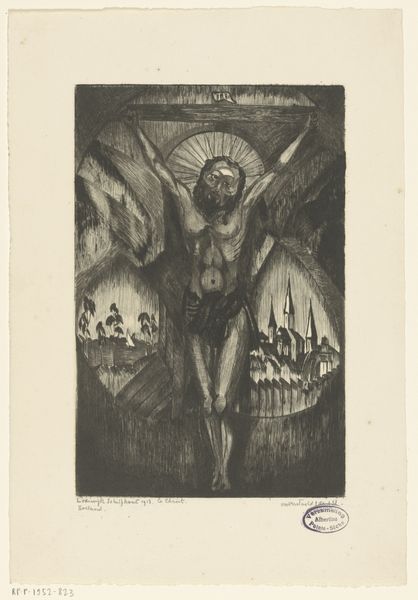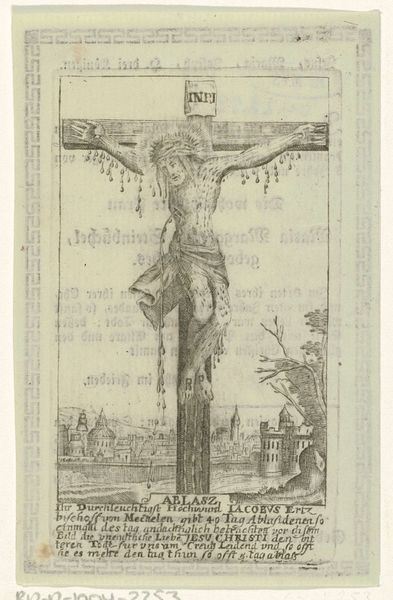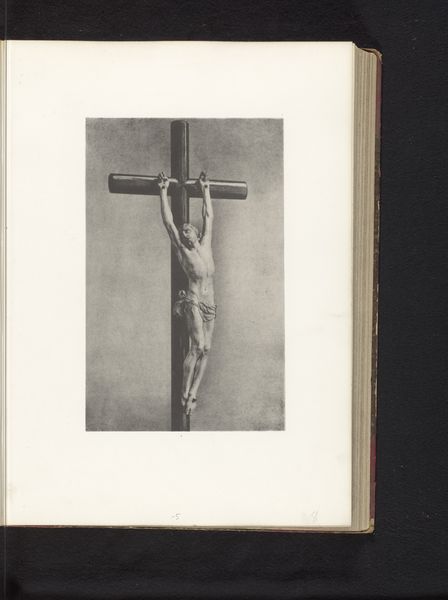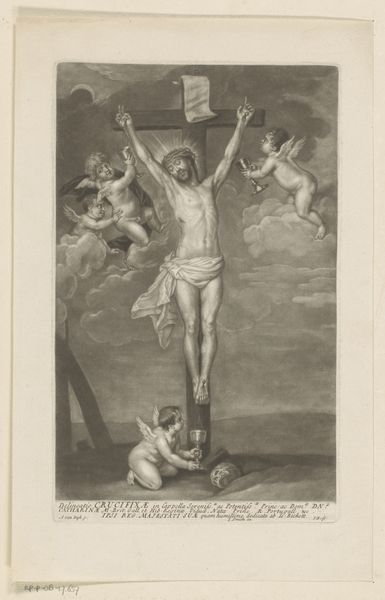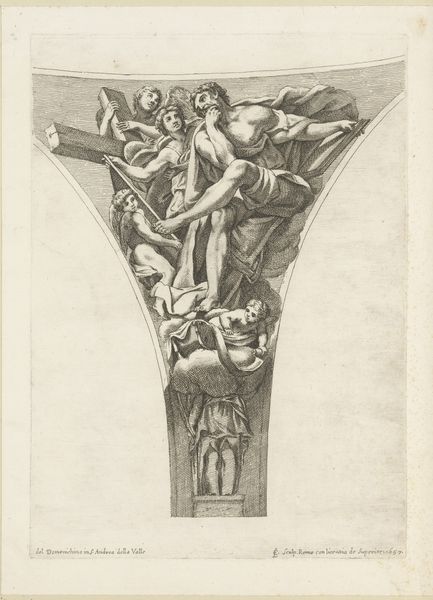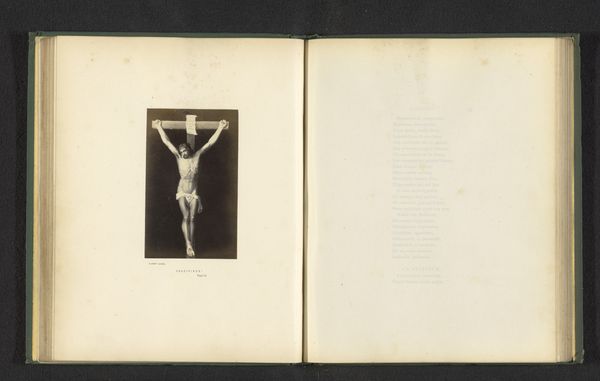
print, engraving
#
baroque
# print
#
figuration
#
line
#
history-painting
#
engraving
#
monochrome
Dimensions: height 109 mm, width 62 mm
Copyright: Rijks Museum: Open Domain
Editor: So, this is "Crucifixion of Christ," an engraving by Sébastien Leclerc I from 1683. It’s currently held at the Rijksmuseum. The monochrome rendering is incredibly striking; the cross seems almost to pierce the sky. What catches your eye when you look at this print? Curator: Beyond the immediately recognizable iconography, I consider the role prints like these played in disseminating religious narratives. Leclerc, working during a time of religious and political tension, produced this piece. The engraving served as a form of accessible devotion, did it not? Its availability shaping public understanding of biblical stories. What do you think is achieved by portraying this pivotal moment using such fine lines, almost creating an ethereal effect? Editor: That’s a great point; I hadn't considered its accessibility. The line work gives it an almost heavenly, untouchable feel, definitely. It’s so different from the oil paintings you see depicting similar scenes. Curator: Exactly. The engraving allows for a wider audience than an oil painting. And remember the context! Seventeenth-century Europe witnessed complex shifts in religious authority. Engravings such as these functioned as potent visual aids within that context. Consider how the composition, positioning Christ high above with the Holy Spirit above him, emphasizes divine authority but it’s a readily available medium. Doesn’t that strike you as something that subtly reinforces established social hierarchies? Editor: It does now that you point it out. I was so focused on the image itself, I didn’t immediately think about the audience and the intended purpose in its time. I appreciate the fresh perspective on how this image of Christ functions socially. Curator: Thinking about the socio-political landscape changes our understanding of Leclerc's decision. We now understand how the artist used accessible prints to engage with the period’s political and cultural dynamics. Editor: That really enriches how I see this work, understanding its dual function as art and cultural artifact! Thanks for illuminating it for me.
Comments
No comments
Be the first to comment and join the conversation on the ultimate creative platform.


